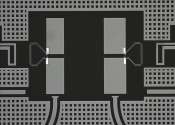Ultracold atoms dressed by light simulate gauge theories
Our modern understanding of the physical world is based on gauge theories: mathematical models from theoretical physics that describe the interactions between elementary particles (such as electrons or quarks) and explain ...









